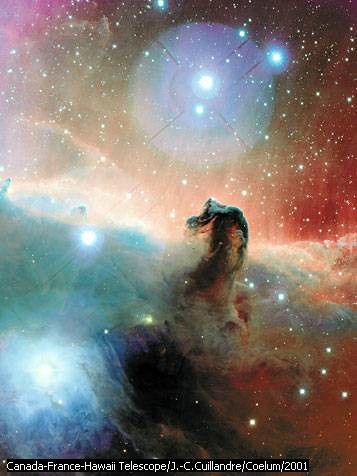Astronomy
| I | INTRODUCTION |

Horsehead Nebula
The Horsehead Nebula, located over 1,000 light-years away in the constellation Orion, is an enormous interstellar cloud of gas and dust. This dark nebula is visible from Earth only because it blocks light emanating from young stars located behind the nebula.
Canada-France-Hawaii Telescope/J.-C.Cuillandre/Coelum/2001
Astronomy, study of the universe and the celestial bodies, gas, and dust within it. Astronomy includes observations and theories about the solar system, the stars, the galaxies, and the general structure of space. Astronomy also includes cosmology, the study of the universe and its past and future. People who study astronomy are called astronomers, and they use a wide variety of methods to perform their research. These methods usually involve ideas of physics, so most astronomers are also astrophysicists, and the terms astronomer and astrophysicist are basically identical. Some areas of astronomy also use techniques of chemistry, geology, and biology.
Astronomy is the oldest science, dating back thousands of years to when primitive people noticed objects in the sky overhead and watched the way the objects moved. In ancient Egypt, the first appearance of certain stars each year marked the onset of the seasonal flood, an important event for agriculture. In 17th-century England, astronomy provided methods of keeping track of time that were especially useful for accurate navigation. Astronomy has a long tradition of practical results, such as our current understanding of the stars, day and night, the seasons, and the phases of the Moon. Much of today's research in astronomy does not address immediate practical problems. Instead, it involves basic research to satisfy our curiosity about the universe and the objects in it. One day such knowledge may well be of practical use to humans. See also History of Astronomy.




0 komentar:
Posting Komentar